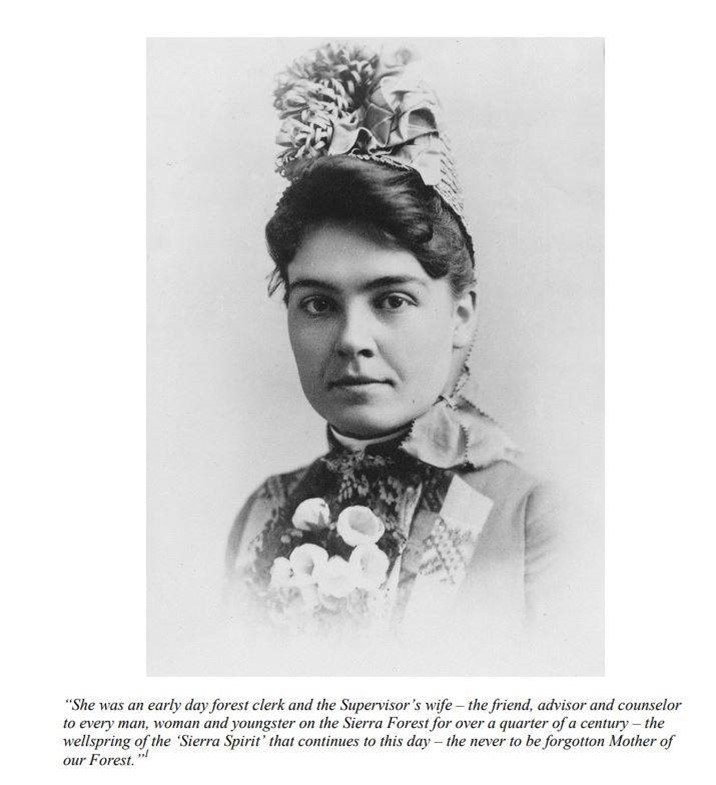Celebrating Women in the Forest Service

Land, Water and People
As the last days of March pass, I want to recognize that we are also closing out Women’s History Month. I’ve read numerous stories this month of the incredible contributions women have made to the advancement of society. I’d like to share one story that truly resonates with me as it is based on an early Forest Service worker.
In the early days of the US Forest Service, word was spreading that the agency was looking for strong men to apply for these newly created positions as Forest Rangers. From the beginning, women made it known, they were just as capable of this work as the men. But, due to the culture of the time, very few were able to crack the shell of this male dominated world and become officially hired as an employee of the US Forest Service.
The agency often enjoyed a “two for one” concept if a married man was hired. Most of the time this proved true, and sometimes, a Ranger was promoted just to retain his wife. Enjoy this short story of one of those invaluable woman employees, Julia Tyler Shinn.
Julia was born in northern California in 1868. She first met her husband Charles in 1879; she was 11 and he 27. Years later, Charles would travel the 130 miles from San Francisco to Merced, every other weekend, to take her for a Sunday picnic and a buggy ride. They married in 1888 and were completely devoted to each other until Charles’ death in 1924.
After several jobs around the Bay Area, Charles eventually landed in an obscure location called North Fork (south of present-day Yosemite National Park) when he became the Supervisor of the Sierra Forest Reserve. With a salary of $900 a year he also had to furnish his own horses and quarters. In 1902, the Shinn’s purchased a 160-acre homestead that had a small cabin. Julia named it “Peace Cabin” and described it as, “three rooms in all, but one had only boards for a roof, and rain came in through streams” with “a pig on the back porch, a calf at the front door.” She tackled the challenge of fixing up the cabin in her usual manner, head-on! She said she accepted at that moment that she now had the status of a mountain woman. The fixed-up cabin became their residence and the first office of the Sierra National Forest.
The duties of the early Forest Service wives were many. They were not only the homemaker, teacher to the children, cook, seamstress, nurse, but became assistant to their husbands as well. They were the office clerk, preparing reports and letters, collecting payments from permittees, and welcoming any and all Forest Service personnel that might arrive to visit or have inspections to perform. She helped estimate fire damage and grazing costs. She cared for the men and earned their respect and love. One ranger said of her, “Bless her, she was the backbone of the Forest Service, the forgotten mother of the Sierra.”
Julia was officially hired as a US Forest Service employee in 1908. She was now the official file clerk. In the Peace Cabin, she would spend hours typing reports and correspondence to the Washington Office. She noted some of the correspondence from Washington was answered, and some weren’t. Later, she became the forest clerk, and rangers from all over the forest came to her for help in creating their reports and correspondence.
After Julia retired, these rangers tried to get the same help from the new forest clerk, who refused to assist them, stating it was not her job. This led one ranger to head straight to Julia and say, “Mrs. Shinn, the office used to be like home; now it’s like hell.” Julia claimed this was the “finest compliment I ever had!”
Julia lived to be 88, passing away in 1956. Many fond memories were shared, such as from Richard Bigelow who said, “Everything I learned of value came from Julia.” Ranger Gene Tully remembered Julia as, “One of the finest ladies I’ve ever known. A personality that could grace a cabin or a mansion. I think I am about the only one alive that can tell the true story of what she meant to a handful of ragged, half-clad struggling rangers. That cheerful, loving smile always shining through a tired face. A motherly pat on the shoulder and a hug meant new life to us.”
This story comes to us from California, but I have no doubt that we had many such amazing women that served, whether officially or not, on the lands known back then by different names. Titles such as the Cochetopa Forest Reserve and the Alamosa, Alder, Creede, and Pyramid Districts of the San Juan National Forest all contributed portions of land that morphed into the modern-day Rio Grande National Forest for which many fine women now work. I wish I’d be around one hundred years from now to hear the great stories of my co-workers being told.
I am grateful to Chandra Allred, records manager for the Rocky Mountain Region of the Forest Service, for her research and inspiration for this article.
Gregg Goodland is the Public Affairs Officer for the Rio Grande National Forest. An avid outdoor enthusiast, he promotes the responsible and safe use of our public lands.



